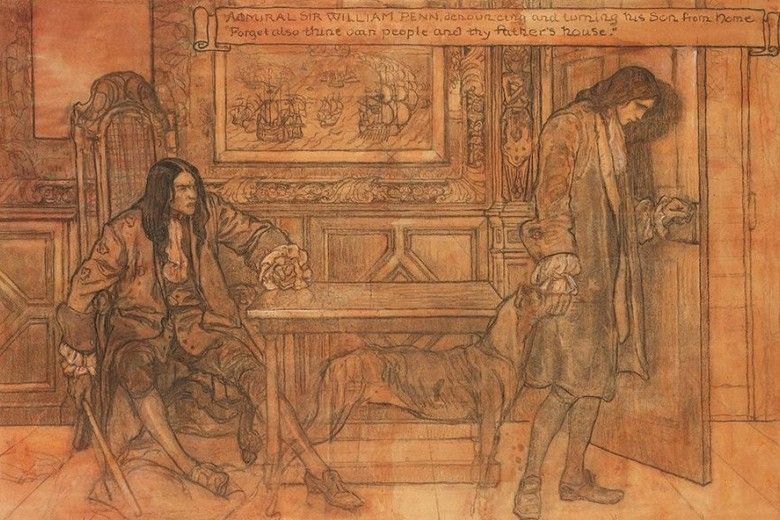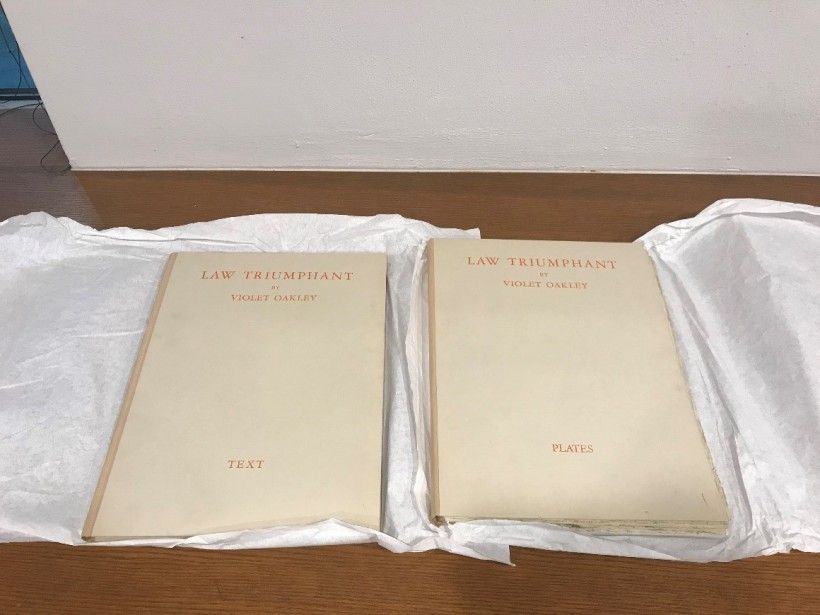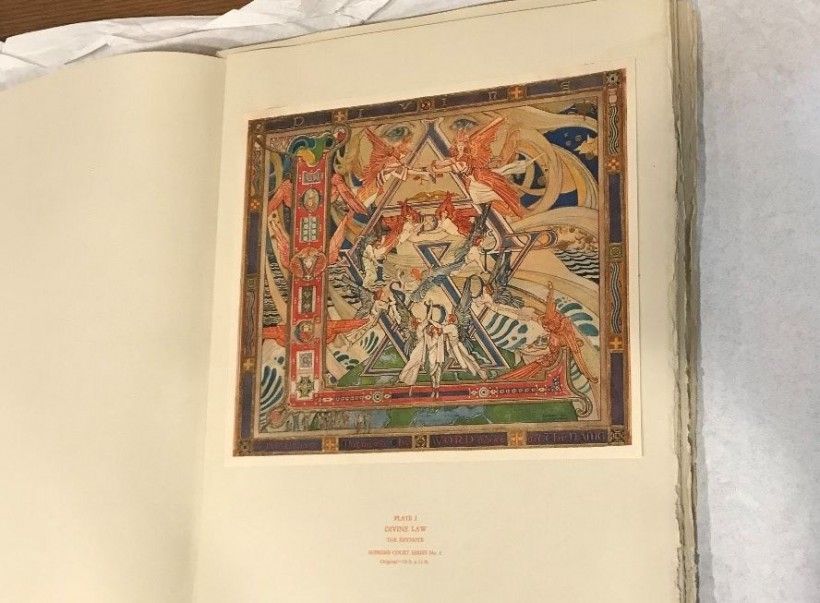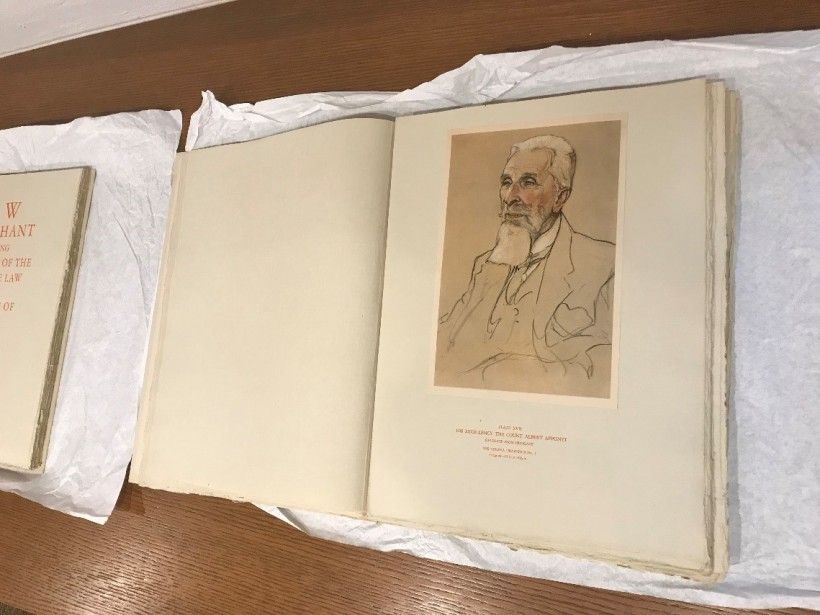A Summer of Looking Forward by Looking Back

The Violet Oakley-Elizabeth Shippen Green-Jessie Wilcox Collection in The Walter & Leonore Annenberg Research Center at the Brandywine River Museum of Art comprises the work of three female artists of the early 20th century who began their careers under the tutelage of Howard Pyle. Through photographs, prints of their drawings and paintings, and materials by other artists of their time, it is possible to slowly piece together their three interconnected though separate lives. Working with this collection included rehousing the documents and photographs, reorganizing them by artist and date, and researching the three artists in the museum’s library to make a finding aid.

One of the most interesting insights this collection provides is a look into the life of Violet Oakley, and particularly her political inclinations in the dawn of the League of Nations. Whether inspired by the teachings of peace and love of her Christian Science faith or feeling the instability of the Western world after World War I, Oakley made the trip to Geneva, Switzerland to attend the assembly in 1927 with strong hopes for the League and its beliefs.

The result was her book Law Triumphant, a two-part publication including both plates and text depicting her interpretation of the evolution of law continuing through her present day to an idealized vision for the future. It also includes many portraits of League of Nations members in the “Miracle of Geneva,” which she drew as she sat in on the meetings. Law Triumphant seems to be a full expression of Oakley and her art in that it shows her belief in a divine purpose and an idealistic faith in the efficacy of law. Flipping through the pages of paintings and text is inspiring and sometimes overwhelming, but I think it best portrays who Oakley was as a motivated citizen and artist.

Header image:
Violet Oakley (American, 1874 - 1961)
Admiral Sir William Penn, Denouncing and Turning His Son from Home: "Forget also Thine Own People and Thy Father's House" (Study), ca. 1903
Charcoal on paper
18 × 27 in. (45.7 × 68.6 cm)
Purchased with the Museum Volunteers’ Fund, 1978